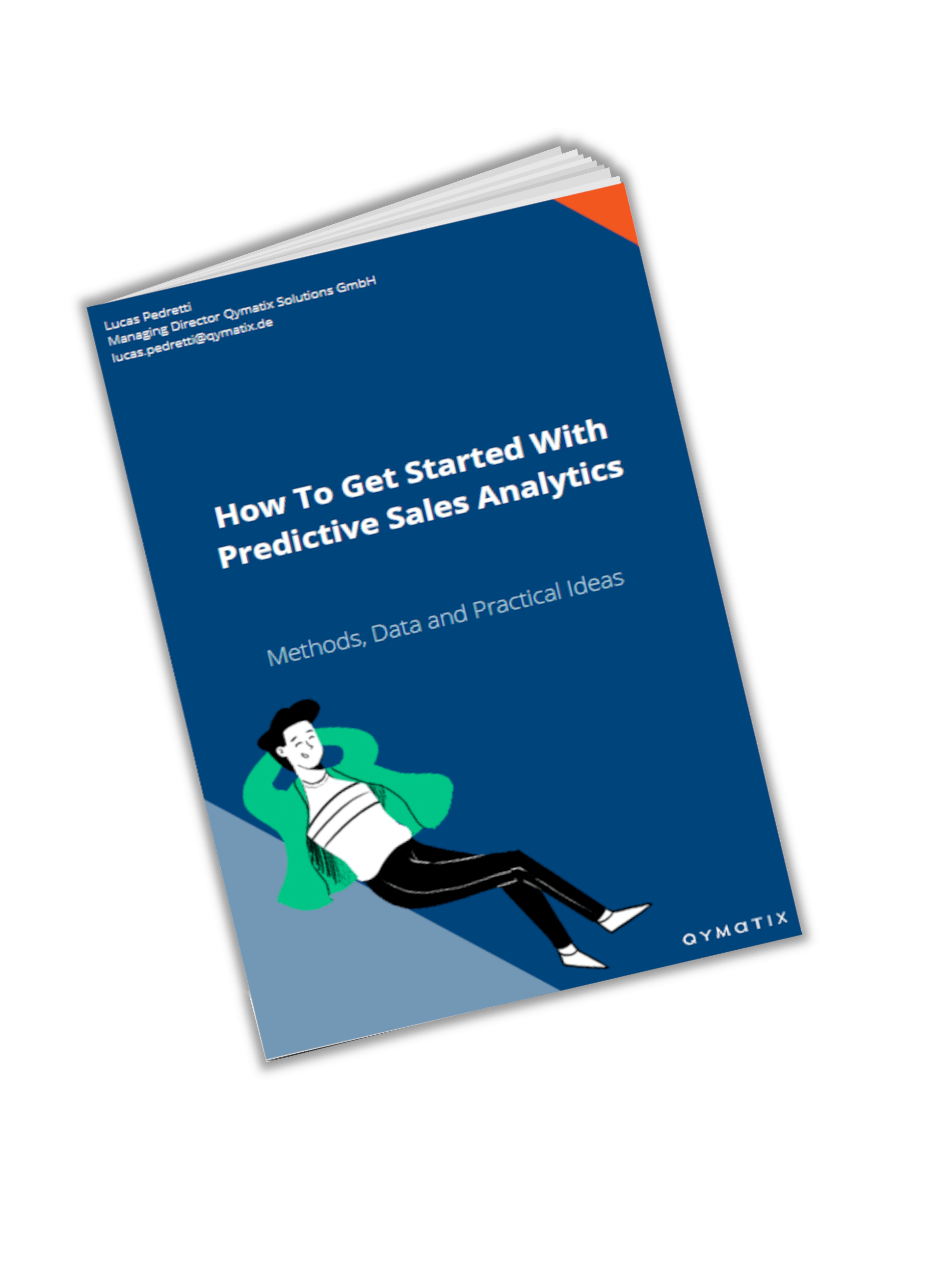How can a classic salesforce get started with predictive analytics?

Please enter your Email address
In the future, it will be all about reading customer data correctly and drawing the right conclusions for customer strategy. That means a paradigm shift for the classic, contract-trimmed salesforce.
Is the classic field salesforce as known to companies and customers – slowly but surely – dying out? The digital transformation, currently the most critical driver of change, suggests this, and it has significant implications for B2B business and for internal processes.
Sales are increasingly data-driven, which means that strategic decisions are made based on the analysis and interpretation of data.
A data-driven approach enables companies to review and organize their data. If the sales department manages to collect, evaluate and use the data already available in the company in the best possible way, it can quickly meet the continually changing customer requirements. They can better understand the customer’s needs and thus better meet their wishes. All this distinguishes today’s sales and distribution from the sales and distribution of a few decades ago. A brief look at the historical development of sales shows what this is all about.
Historical development of sales versus today
To be able to show what makes up today’s sales clearly, it is worth looking at the past. A few decades ago, sales were quite different, as the general conditions for acquiring new customers were entirely different from today. And not to mention today’s possibilities of data analysis and data-based forecasts (predictive analytics).
In the period from shortly after the Second World War until about the mid-1970s, there was almost no competition. There was nearly exclusively a seller’s market to cover the existing demand.
From the mid-1970s to the year 2000, competition increased, and customers had the choice of several suppliers. There was an oversupply of goods and services. The supplier who has the best understanding of the customer gets the contract.
Increasing transparency for the customer characterizes the period from 2000 to the present.
Nowadays, customers are very well informed about many products and services as well as about corresponding providers. The knowledge advantage of the sales department is beginning to disappear. There is a high level of price, and market transparency and online or e-commerce is an integral part of many sales strategies.
From backward-looking CRM to forward-looking predictive analytics
Today the situation is entirely different from 20 years ago. Distributors can benefit from high-quality data analyses that companies create about their customers from a wide variety of internal sources. Provided, of course, that sales staff are also provided with the data or can collect it themselves. That requires a fundamental overcoming of a defensive attitude towards the use of data, which, according to expert opinion, still seems to be quite high in some companies.
What salespeople have been using for a long time as a matter, of course, are classic CRM systems with which they can systematically investigate the behaviour of their prospects and customers. They look in the rear-view mirror, so to speak, and follow the practice of customers and potential customers: Where did contact take place? What did the customer buy? Which landing page did he or she visit? Which links did he or she click?
Big Data goes further: it systematically combines and analyses data from internal and external sources. That allows future development probabilities to be derived. For example: What will a customer possibly buy for an additional product from the range (for example, from a wholesaler)? For which customers could cross- or up-selling campaigns pay off? Which customer is likely to drop out (churn management)? As already mentioned, predictive analytics is all about probabilities of occurrence, not strong statements about whether and what customers will do next. Often it is about correlations between thousands of variables, based on which development probabilities can be derived.
CALCULATE NOW THE ROI OF QYMATIX PREDICTIVE SALES SOFTWARE
Predictive analytics as a paradigm shift for traditional sales
Excel tables and CRM lists are not just a thing of the past with predictive analytics. Salespeople will soon recognize that customer lists based on predictive analytics possess a higher value. Predictive analytics automatically and statistically calculates scores assigned to each customer.
Information about the age, income and past purchasing behaviour of customers, for example, flows into a score. The score then indicates, for example, how well a product suits the customer or not, or whether the customer has a high risk of churn.
Eager salespeople, who often confuse correlation with causality, should grasp that a score of 0.5 does not undeviatingly mean that there is a 50 % chance of success in closing a deal. The philosophy behind such a rating is that salespeople should contact customers with a higher score than those with the lower one.
Whether you achieve a successful conclusion is an entirely different question.
In this respect, predictive analytics also means a paradigm shift for the classic salesforce, which should throw its old sales thinking overboard and open itself up to the use and correct handling of customer data. In the future, it will be a matter of being able to read customer data correctly and draw the right conclusions from it.
Do you have any further questions on Predictive Analytics? We are happy to help!
CONTACT US TODAY FOR YOUR PERSONAL CALL
Free eBook for download: How To Get Started With Predictive Sales Analytics – Methods, data and practical ideas
Predictive analytics is the technology that enables a look into the future. What data do you need? How do you get started with predictive analytics? What methods can you use?
Download the free eBook now.
- We will use this data only to contact you for discussing predictive sales KPIs. You can read here our declaration on data protection.


